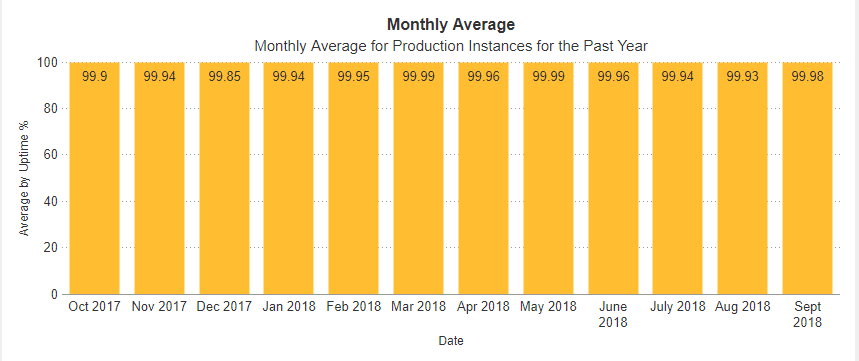Why Switch to a Hosted Datacenter
-
October 2, 2018
- Posted by: Scalable Team
According to CNBC, AWS and Azure have been growing at double-digit rates for the past few years. In 2008, Gartner had cloud spending coming in at about 5.5% of IT budgets. Now in 2018, Gartner has cloud spending at 19% and growing to 28% of enterprise spending by 2020.
A good example of this trend is Accenture. They are 85% of the way through their journey to put 90% of the company’s IT infrastructure into the cloud. Why have we seen this growth? According to Nick Youell, Senior Vice President of Products at Scalable Software, the answer is simple, “costs and flexibility.”
Costs
A lot of IT leaders believe that the cloud costs more and they are paying a premium for not having to run their own datacenter. The false belief is driven by seeing the precise costs from an IaaS provider whereas they generally cannot get the same level of detail out of their own datacenters. The reality is that in a traditional datacenter those costs are in, most cases, masked by a variety of factors. According to Youell, what most companies don’t factor in when calculating the costs for an in-house datacenter include cost of the space, capital investment in the equipment, HVAC electricity costs, costs of the infrastructure software like VMware, maintenance costs on the hardware and software, networking costs, cost of the people to run it (the system and network administrators, etc.), and the equipment these admins use. The point is, almost always, the total cost for an in-house datacenter is significantly higher than the equivalent in AWS or Azure over a five-year period.
Flexibility
Once an organization has a datacenter, it is labor-intensive and also very costly to expand when the business starts to grow. A new space will need to be secured, new hardware will need to be purchased, and more administrators will need to be hired. If the business goes on difficult times and needs to cut costs, it may be very hard to determine which servers to retire and how to recoup the capital expenditures. For AWS and Azure, all it takes are a few clicks to increase or decrease your hosted data center size.
Security and Reliability
From a security and performance standpoint, providing a secure IaaS environment is a top priority for suppliers such as AWS and Microsoft. If their environments aren’t secure, their business evaporates. This means security and reliability is paramount and they spend all their energies thinking about it, improving it, and hardening it. Services from providers such as AWS and Azure can allow an organization to upgrade to a higher level of security and reliability which is very difficult to achieve on your own. Generally, in the case with internal systems you just don’t have the resources or knowledge to come close to the security and reliability AWS or Azure can provide.
At Scalable Software, we run our SaaS application on AWS. We have never experienced a breach and our uptime rating has been a solid 99.9% (2.4 minutes per week). Some may say 5 nines is the best, but realize this is not a mission critical application such as in manufacturing, e-commerce, online banking systems, aircraft operating and control systems, etc. While important, your business will not stop functioning if it is down for a few minutes.
Whether you are looking for a tool to track your current in-house datacenters or your hosted datacenters, Asset Vision can help. Asset Vision’s probe obtains a full inventory of what you have in AWS or Azure. With this information, your organization will be able to determine what they have, who is using it, and where it is located. If you would like more information, please contact us.
